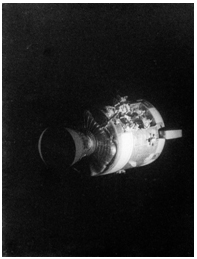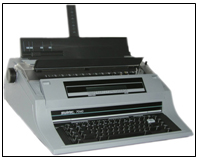
|
||
| FLATLINE | ||
"Houston, We Have a Pica Problem!"
Cause of Apollo 13 Explosion Finally Known
|
(Cape Canaveral, FL) — Four decades after NASA faced one of its greatest crises, its cause has finally been made official. And it's nothing that anyone outside a select circle at NASA ever expected. Apollo 13 blasted off for the moon on April 11, 1970. Two days later, one of the oxygen tanks in its command module exploded, leading to four extraordinary days of overcoming incredible obstacles and tremendous odds until a successful splashdown on April 17. For almost forty years, NASA assumed that faulty wiring in the Apollo 13 command module was to blame for the explosion that crippled the mission. But it has now been revealed that, for reasons still not known, Commander Jim Lovell stowed a Swintec typewriter aboard. This typewriter, which had not been used for several years, gave off a spark and caused the explosion that doomed Apollo 13. "It's great to finally have this mystery solved and out in the open," said a NASA spokesman, speaking on condition of anonymity. "As far as we can tell, these Swintec typewriters are now only used at Federal agencies where penmanship is an issue. For example, if a Non-Supervisory Supervisor, or NOSS, were to complain about a co-worker's penmanship, the co-worker might be tempted to use the typewriter. But, of course, the NOSS would never allow the typewriter to be turned on, allowing them to exert authority where they really have none." "But this is a serious problem," continued the NASA spokesman. "And for those who still might use these typewriters, or who might think of using then, I have a clear and direct message if they're contemplating powering up these units. NO! YOU CAN'T TURN ON THE TYPEWRITER! WHO KNOWS WHAT WOULD HAPPEN IF YOU TURNED ON THE TYPEWRITER? YOU CAN'T TURN ON THE TYPEWRITER." |
  |
"Houston, We Have a Pica Problem!" Cause of Apollo 13 Explosion Finally Known. FLATLINE 2010 Jan-Feb;12(1-2):e1.




